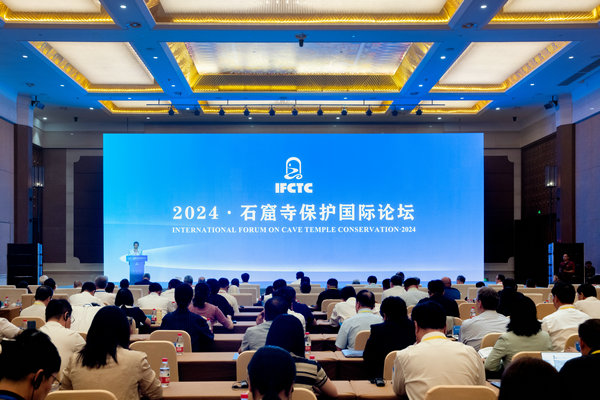



The 2024 International Forum on Cave Temple Conservation, organized by the National Cultural Heritage Administration, kicked off on Monday in Dunhuang, Gansu province. [Photo provided to chinadaily.com.cn]
The 2024 International Forum on Cave Temple Conservation, organized by the National Cultural Heritage Administration, kicked off on Monday in Dunhuang, Gansu province.
Under the theme of "promoting Silk Road cultural exchanges, building the dream of the Belt and Road Initiative", several hundred experts from 16 countries and regions have gathered to discuss the study, protection and management of cave temples.
Cave temples refer to grottoes and sculptures carved into cliffs or mountains, as well as the remains of temple sites, and cliffside statues. They possess significant cultural, historical and artistic value.
Dunhuang is known for the Mogao Caves, a UNESCO World Heritage Site with hundreds of Buddhist caves dating from the 4th to the 14th centuries that are known for their exquisite murals and statues.
According to Guan Qiang, deputy director of the National Cultural Heritage Administration, China's cave temples, as represented by Mogao, not only vividly demonstrate the spread of Buddhism in China, but are also testimony to Chinese civilization.
After more than 70 years of effort, the main risks to the country's most important cave temples have been largely eliminated. That means the exploration and practice of protecting and repairing cave temples, reinforcing their structure, and improving environmental management, as well as digital preservation and monitoring, have been very effective in China, Guan says.
Professor Shahbaz Khan, director of the UNESCO Regional Office for East Asia, said the protection of cave temples faces increasing challenge from climate change and environmental degradation across the world. As a result, international cooperation has an important role to play in the field.
Over the course of two days, scholars will exchange ideas on the subject of cave temples.